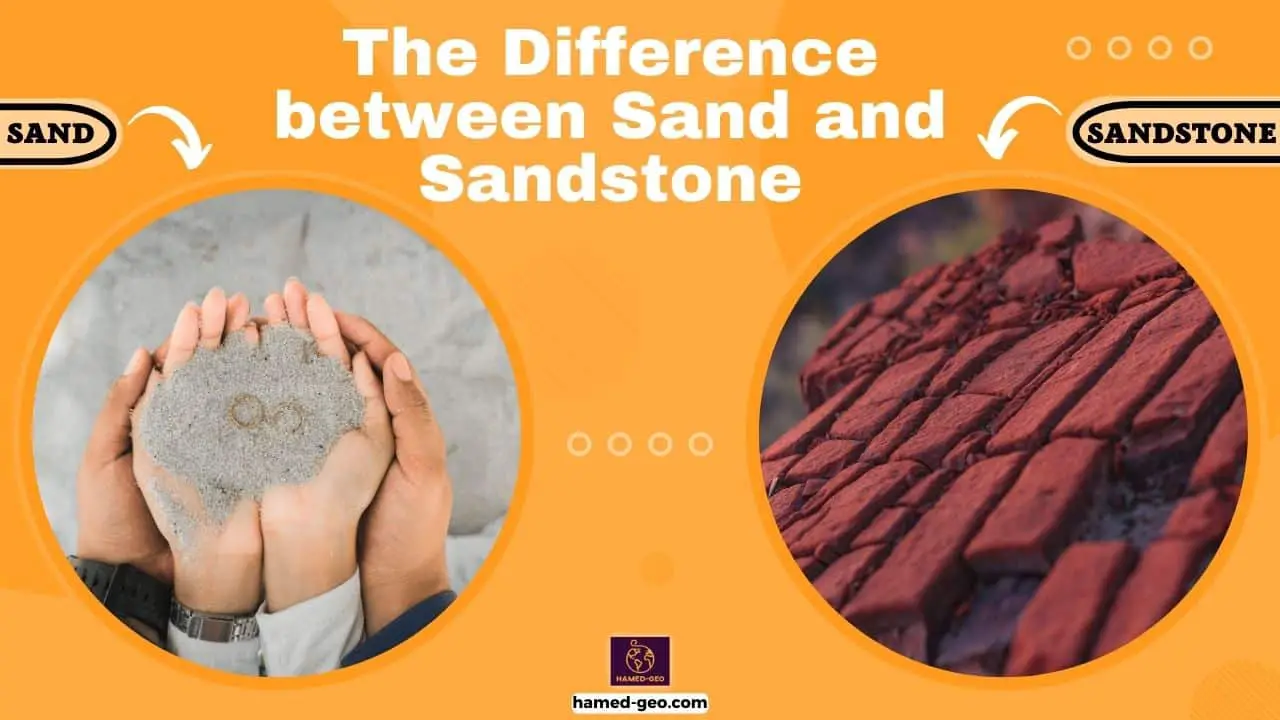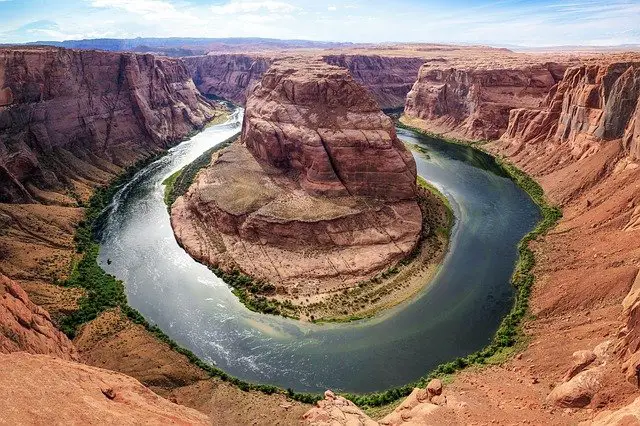Sand and sandstone are two terms that are often used interchangeably, but they are actually two very different things. While sand is a loose, granular material made up of tiny particles of rock, sandstone is a much harder and more durable rock that is formed from layers of sand that have been compacted and cemented over time. In this article, we will explore the key differences between sand and sandstone.
Here is a table summary of the difference between sand and sandstone
| Category | Sand | Sandstone |
| Nature | Loose, granular material | Hard, compacted sedimentary rock |
| Formation process | Weathering and erosion of rocks and minerals | Compaction and cementation of layers of sand |
| Physical properties | Relatively low density (1.5-1.7 g/cm3) and low compressive strength | Higher density (2.2-2.8 g/cm3) and higher compressive strength |
| Porosity | Highly porous | Less porous than sand |
| Uses | Production of glass, ceramics, electronics, construction, hydraulic fracturing | The building material for walls, floors, architectural features, decorative stone in landscaping, sculptures, carvings, production of grindstones, sharpening stones, and other abrasive tools |
| Resistance to erosion and weathering | Not resistant | Resistant due to interlocking texture and cementing materials |
Key differences between sand and sandstone
The key differences between sand and sandstone are the loose, uncemented nature of sand grains vs. the cemented and hardened nature of sand grains in sandstone. The cementation process is what turns a loose granular material into a cohesive sedimentary rock with significantly different properties. While the sand grains that makeup sand and sandstone may be similar in size and composition, the absence or presence of cement binding the grains together results in distinct materials with distinct attributes and uses. The loose flowability of sand contrasts with the hard, blocky shape of sandstone.
What is sand?
Sand is a naturally occurring granular material comprising rock fragments, mineral grains, and other organic or inorganic materials. It is one of the most common materials found on earth, and it can be found in various environments such as beaches, deserts, and riverbeds. Sand is formed through the process of weathering and erosion of rocks and minerals. When rocks are exposed to wind, water, and other elements, they break down into smaller particles, which eventually become sand.
Sand is composed of individual grains that range in size from 0.063 to 2 mm in diameter. These grains are typically made up of minerals such as quartz, feldspar, and mica, but they can also contain other materials such as rock fragments. The shape and size of the sand grains can vary depending on the source material and the environmental conditions in which they were formed.
What is sandstone?
Sandstone, on the other hand, is a sedimentary rock that is composed of sand-sized grains of mineral, rock, or organic material that have been cemented together. Sandstone is formed through the process of lithification, which involves the compaction and cementation of sedimentary material. As layers of sediment are deposited over time, they are subjected to pressure and heat, which causes them to become compacted and cemented together.
Sandstone is made up of individual grains that are similar in size to those found in sand. However, these grains are cemented together, which gives sandstone its distinct texture and structure. The cementing material in sandstone can be made up of various minerals such as calcite, silica, and clay. The type of cementing material and the grain size and shape can determine the sandstone’s strength and durability.
Physical Properties of Sand and Sandstone
One of the key differences between sand and sandstone is their physical properties. Sand is a loose, granular material that is easily moved by wind and water. It has a relatively low density (1.5-1.7 g/cm3) and low compressive strength. Sand is also highly porous, which means it can hold a large amount of water.
In contrast, sandstone is a much harder and more durable rock. It has a higher density (2.2-2.8 g/cm3) and a higher compressive strength than sand. Sandstone is also less porous than sand and can hold less water. Its interlocking texture and cementing materials make sandstone resistant to erosion and weathering.
Uses of Sand and Sandstone
Sand and sandstone have a wide range of uses in industry, construction, and art. Sand is used in the production of glass, ceramics, and electronics. It is also used as a construction material for roads, buildings, and other structures. Sand is also used in hydraulic fracturing, or “fracking,” to extract oil and gas from shale formations.
Sandstone is widely used as a building material for walls, floors, and other architectural features. It is also used as a decorative stone in landscaping and as a material for sculptures and carvings. Sandstone is also used in the production of grindstones, sharpening stones, and other abrasive tools.
Formation of Sand and Sandstone
Sand is formed by the erosion of rocks and minerals, which are broken down into tiny particles by wind and water. These particles are then transported by wind and water to different locations and deposited as sediment. Over time, the sediment builds up and forms layers of sand.
Sandstone is formed by the compaction and cementation of layers of sand over time. As the layers of sand are buried under more sediment, the pressure and temperature increase, causing the sand grains to compact and the minerals in the cementing material to recrystallize and fuse together. The cementing materials fill in the spaces between the sand grains, forming a solid rock.
In conclusion, while sand and sandstone share some similarities in terms of their composition, they differ in their physical properties, formation processes, and uses. Sand is a granular material that is formed through the process of weathering and erosion, while sandstone is a sedimentary rock that is formed through the process of lithification. Sand is relatively soft and porous, while sandstone is harder and less porous. Sand is commonly used in construction and glass manufacturing, while sandstone is used in a variety of applications, including building facades, flooring, and paving. Understanding the differences between sand and sandstone can help us appreciate the unique qualities of each material and their importance in various industries and applications.



